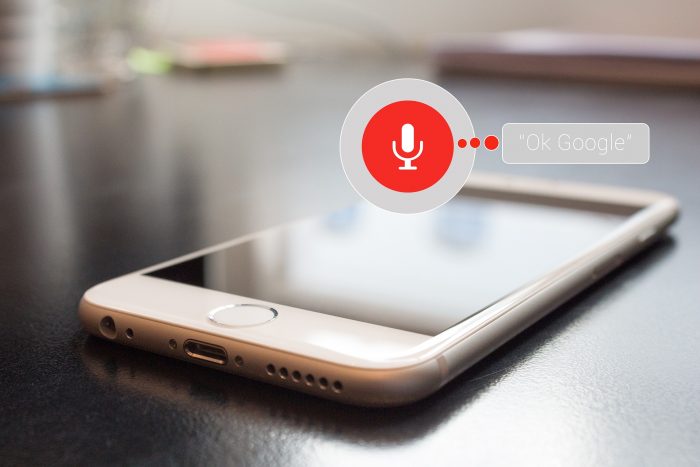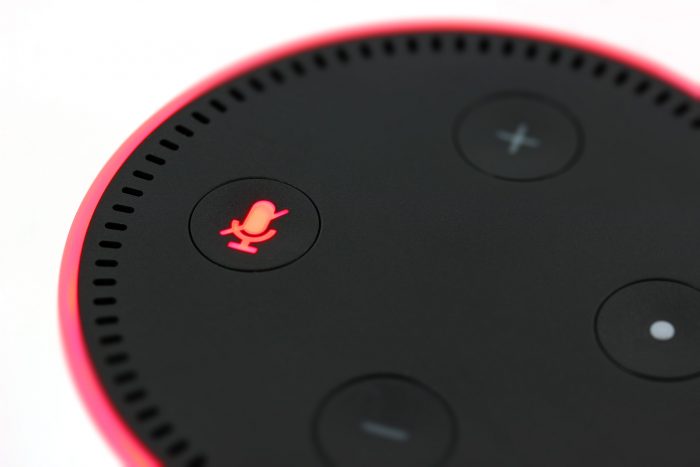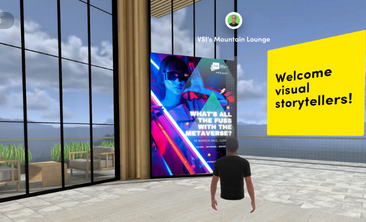
6 audio storytelling trends to watch for
6 audio storytelling trends to watch for https://www.visualstorytell.com/wp-content/uploads/2019/02/audio_thumb.jpg 370 218 Shlomi Ron Shlomi Ron https://secure.gravatar.com/avatar/995c0cf093380b90c7704fda398c9addf4e5c605afbc92af5c3f01f67d65aa41?s=96&d=mm&r=g- Shlomi Ron
- no comments
Do you have an audio storytelling strategy? Or better yet, is your content strategy optimized for audio?
I know what you might be thinking now, why audio? Isn’t the VISUAL Storytelling Institute all about visual?
True! But the way I see it, there are two ways the human brain can consume visual content: 1) DIRECT gaze at a physical object in the real world, and 2) INDIRECT invocation of a mental image triggered by a spoken word or a great story. I have discussed this topic in detail in my recent podcast: How to make your audience visualize your story?
Now that’s this doubt is out of the way, let’s continue.
Up until a few years ago, the hot question of the day was “Is your content optimized for mobile? to appease another change in Google search engine’s algorithm.
These days, with the overwhelming content overload, the insane pace of news cycles, the growing strain on audience attention and eyes is growing. The average employee checks 40 websites a day, switching activities 37 times an hour, changing tasks every two minutes (DigitalDetox.org).
As a result, a new Digital Detox movement has emerged with the mission of Disconnect to Reconnect, including tech titans like Apple adding a Screen Time app in order to maintain a healthier digital diet plan.
Into this context, audio has emerged as a user-friendly middle ground. You’re finally free from the tiering screen glow and can still be connected to valuable content with the added advantage of doing it on the go while multitasking; running, hiking, driving a car, riding a train, or during long flights.
When you take a forest view at the audio storytelling ecosystem you see staggering growth in 6 key areas you should definitely be active in:
1) Podcasts

With over 630,000 shows produced in 2018 with 44% of the US population listening to podcasts (PodcastInsights.com). I have started the Visual Storytelling Today podcast two years ago where I interview notable visual storytellers about their crafts and experiences. I take an adaptive transmedia approach in the sense that my podcast content can be consumed in three ways: an audio content for podcast networks, video content for YouTube and social and long-form blog post for VSI Blog.
2) Audio Blogs

I have recently received a request from a loyal VSI Blog reader if there is an option to transcribe our blog content into audio. She was also kind enough to suggest a few tools. I naturally obliged and now VSI Blog content is fully audio friendly. Text-to-Speech (TTS) tools allow you to select the voice you like and they also include a wide range of interfaces you can customize around your brand colors.
3) Audiobooks

Taking the audio blog to the next level you find the tremendous growth in audiobooks with Pew Research reveals that in 2018 almost one-fifth of Americans listened to audiobooks. So find your favorite title in audiobook format and start conjuring your own imagery through your personal Theater of the Mind. If you are planning to publish a book or have one in the market, audio should be an essential part of your integrated distribution strategy.
4) Audio Experience

Audio can also serve as a centerpiece of a transmedia storytelling experience. In a recent newsletter, I discussed the clever use of audio by the folks @ T Brand Studio, NEWYORKTIMES.COM who pushed the transmedia storytelling envelope with a special Sunday magazine a few weeks ago, called Voyages. The entire print magazine features only pictures taken from around the world. But instead of reading supporting articles, readers were instructed to visit a dedicated Web page with numbers matching each picture in the print magazine and listen to the soundtrack of the picture. What audio-driven experience can you do to delight your audience?
5) Voice search

Comscore predicts that 50% of all searches will be voice searches by 2020. Over a billion voice searches per month in 2018. Any smartphone and browser today are equipped with voice search capabilities. This way, your audience can voice search related keywords to your business using Siri on the iPhone, and Google Now, Microsoft Cortana and others on their Android phones. You’ll find voice search also on Web browsers and smart TVs. According to SEO expert, Bradley Shaw, voice search differs from traditional search in 4 areas: the length of the query, search formed as questions vs. statements, the intent will be stronger and the local impact is major. Read more about how you could optimize your Website for voice search on Bradley’s insightful article.
6) Voice Personal Assistants (VPAs or Smart Speakers)

Last year, 20% of the US adult population now uses smart speakers with Amazon Echo leading the largest market share 70%, Google Home, 24% and Apple HomePod at 6% (Voicebot.ai). 52% of people keep their voice-activated speakers in their living rooms, per Google. 25% keep them in their bedrooms, while 22% keep them in their kitchens. According to Adobe’s survey, the top 3 most popular uses of smart speakers include: listening to music (70%), checking the weather (64%), and asking fun questions (53%). The top 3 emerging uses of smart speakers: Asking for directions (34%), smart home commands (31%), and shopping and ordering items (30%). Have you explored opportunities for creating an experience your product or service could be adapted to your audience home or office environment using voice personal assistant?
Few useful tools I am using:
- Libsyn for distributing my podcast.
- Speech Kit for transforming my blogs to audio.
- Libby app for borrowing audiobooks from my local public library.
As you can see, audio has become an essential seamless vehicle to engage audiences without exhausting their full energy and attention. Your audience can consume your audio-based content while multitasking or in a sedentary mode while riding a train for example. Your user can proactively activate the audio experience or be on the reactive side receiving tips and recommendations.
Furthermore, with audio experience, you don’t need to budget a line item for a visual artist, as your user’s visual storytelling mind will happily cover that task with personally relevant images and moving memories only she can invoke to add meaning to your audio stories.
Feel free to contact me if you’d like to discuss and explore ways we could help you realize the full potential of audio for your business.
Need help setting up your audio storytelling program?
Schedule a FREE appointment so we can capture your business requirements.
- Posted In:
- Story Making
- Story Telling
- Visual Storytelling
Shlomi Ron
Shlomi Ron is the founder and CEO of the Visual Storytelling Institute, a Miami-based think tank with a mission to bring the gospel of visual storytelling from the world of art to more human-centric and purpose-driven marketing. A digital marketing veteran with over 20 years of experience working both on the agency and brand sides for Fortune 100/500 brands such as Nokia, IBM, and American Express. He started VSI to combine his marketing expertise with his passion for visual stories stemming from his interests in classic Italian cinema and managing the estate of video art pioneer, Buky Schwartz. At VSI, he helps brands rise above the communication noise through visual storytelling consulting, training, and thought leadership. Select clients include Estée Lauder, Microsoft, and Cable & Wireless – to name a few. He currently teaches Brand Storytelling at the University of Miami’s Business School. Thought leader and speaker at key marketing conferences. He is also the host of the Visual Storytelling Today podcast, which ranks in the top 10 best business storytelling podcasts on the Web. His book: Total Acuity: Tales with Marketing Morals to Help You Create Richer Visual Brand Stories. Outside work, he is a nascent bread baker, The Moth fan, and longtime fedora wearer likely to jive with his classic Italian cinema interest.
All stories by: Shlomi RonYou might also like
This site uses Akismet to reduce spam. Learn how your comment data is processed.





Leave a Reply